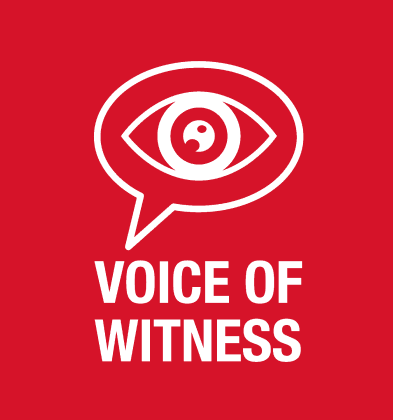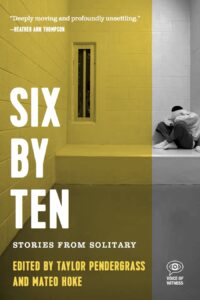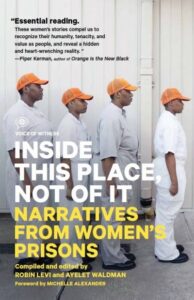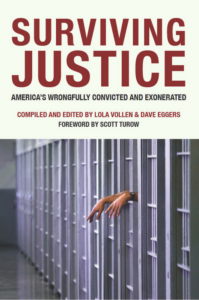The Voice of Witness book series amplifies the stories of people directly impacted by—and fighting against—injustice. We use an oral history methodology that combines ethics-driven practices, journalistic integrity, and an engaging, literary approach.
The books explore issues of inequity and human rights through the lens of personal narrative. Each project aims to disrupt harmful narratives by supporting historically marginalized or silenced communities to tell their own stories in their own words.
Book clubs are useful tools for engaging and interacting with these oral histories and the issues they highlight. Find our handout with guidance on planning and facilitating one here.
Use the questions below to start a book club for Six By Ten: Stories From Solitary.
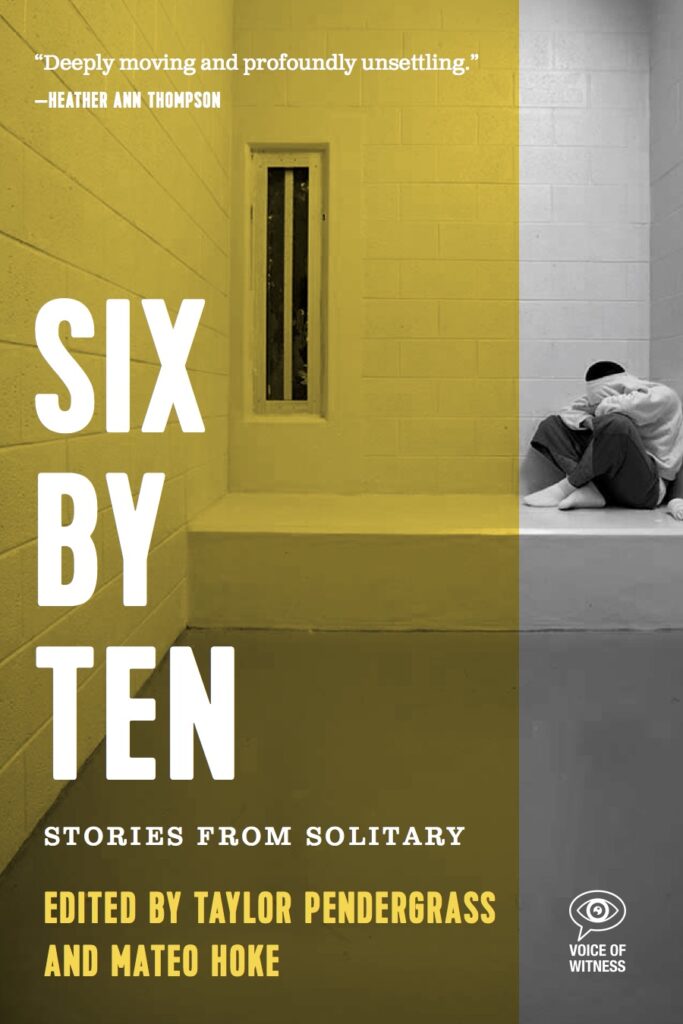
Discussion Questions:
- A recurring theme throughout this book is the way solitary confinement dehumanizes prisoners. Using Aaron Lewis’s, Tonja Fenton’s, and Mohammed “Mike” Ali’s narratives as examples, discuss textual examples that illustrate this. How did the dehumanizing nature of
solitary confinement affect them? - At the end of Travis Trani’s narrative he says, “Our job is to balance prison safety and public safety. Our job is to protect the public and try to effect change when people come back into society. Our job is rehabilitation.” Do you believe that rehabilitation is a crucial and/or functioning part of our prison system? Do you agree with Trani’s statement of responsibility?
- In Heather Chapman’s narrative, her son Nico was sentenced to ten years under a mandatory minimum. There are many arguments for and against this practice. Have a group discussion about the pros and cons of mandatory minimum sentencing.
- In his narrative, Levi Stuey discusses a few controversial topics: “prison politics,” his white power tattoos, and his addiction. What does his perspective add to the book as a whole?
- In Six by Ten we hear from current prisoners, ex-prisoners, family members, and corrections officers. Who else can you think of that is directly or indirectly impacted by the issues presented in the book? Think of other individuals, groups, or communities.
- Sonya Calico remembers a sergeant saying “It’s for your protection,” when moving her to solitary. Does the repackaging of solitary as “protective custody” enable discrimination? What is the impact of making a punitive practice prescriptive for trans and gendernonconforming prisoners?
- Steve Blakeman describes his attempts to remove the “guards versus inmates” dynamic by changing how officers interacted with prisoners. How does this dynamic, as described by Blakeman, contribute to a culture of dehumanization and violence? Why do you think the dynamic remained in place despite Blakeman’s policies?
- Shearod McFarland, in his narrative, asks: “Why does crime in urban black areas translate into jobs for rural or mostly white areas?” Consider the statistics on the rates at which people of different races are incarcerated, and the demographics of the officers who work in these institutions. What are the effects of viewing prison as an industry? Who benefits from it?
- In several narratives we see people penalized for being “different,” deviating from cisgender, heterosexual, Christian identities. Examining Tonja Fenton, Sonya Calico, and Maryam Henderson-Uloho’s narratives, discuss how the prison system may even amplify the prejudices present in society as a whole. Could it work to break them? How?
- In Six By Ten, several narrators discuss the mental effects of solitary confinement as well as the physical effects. How does solitary confinement impact mental health, and what responsibility does the prison have to mitigate these effects? How does this type of trauma impact recidivism rates and rehabilitation efforts?
